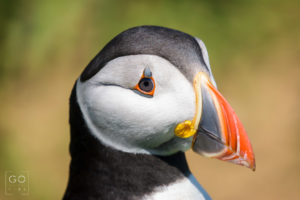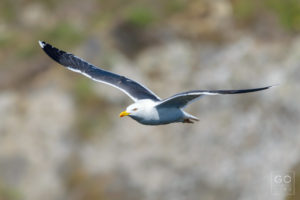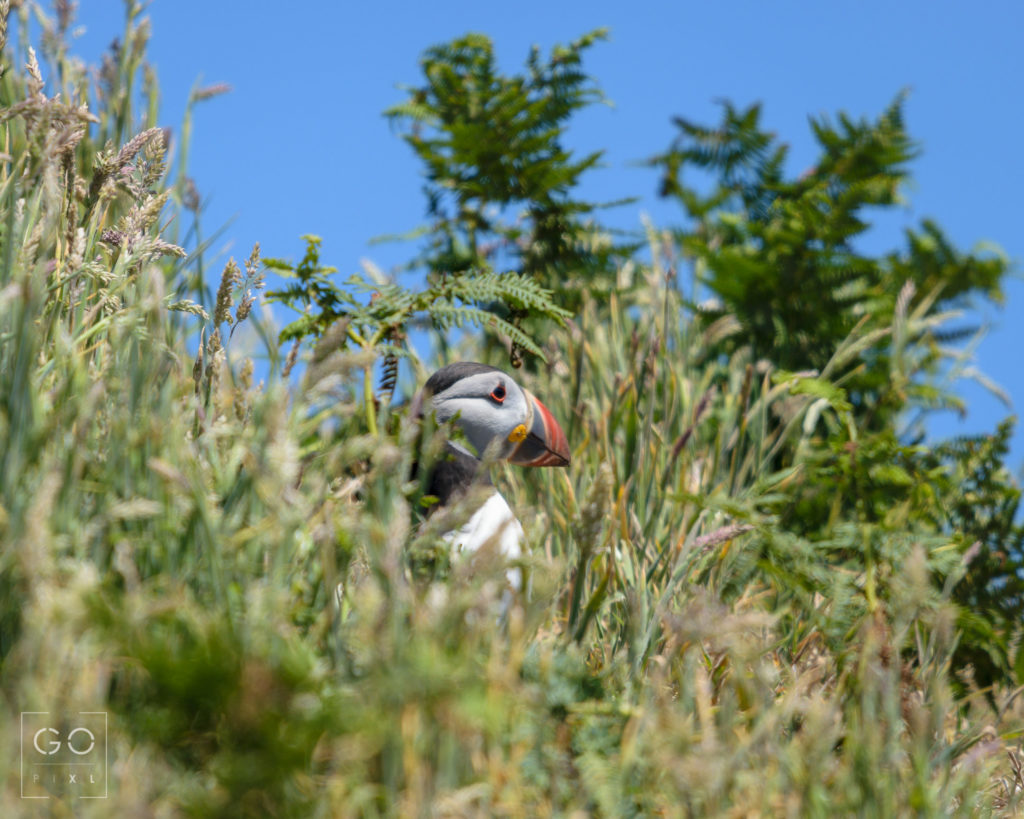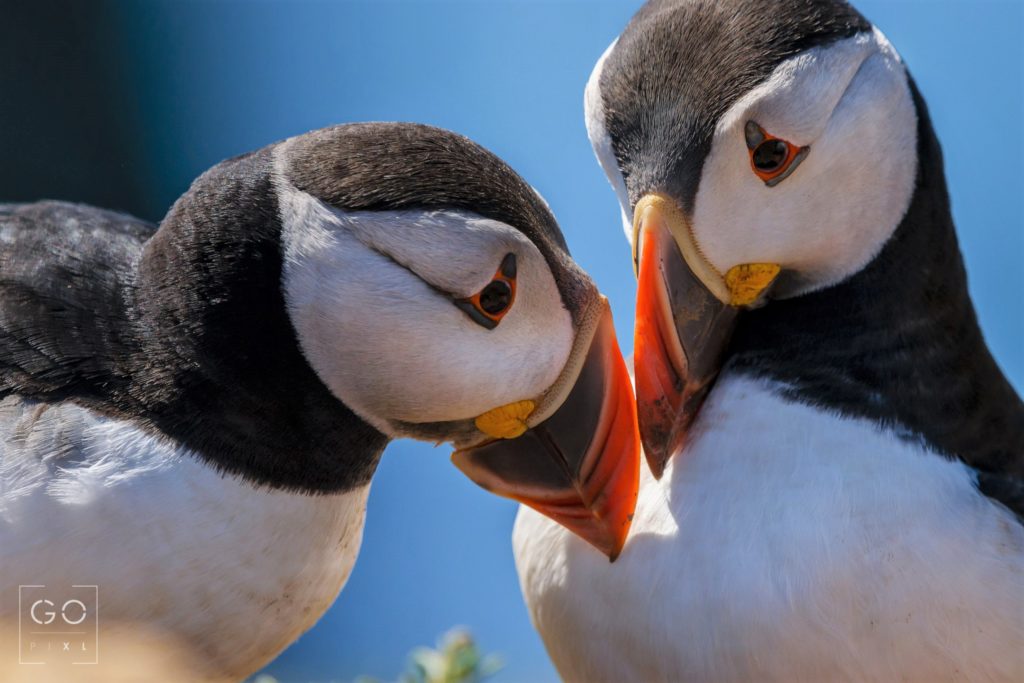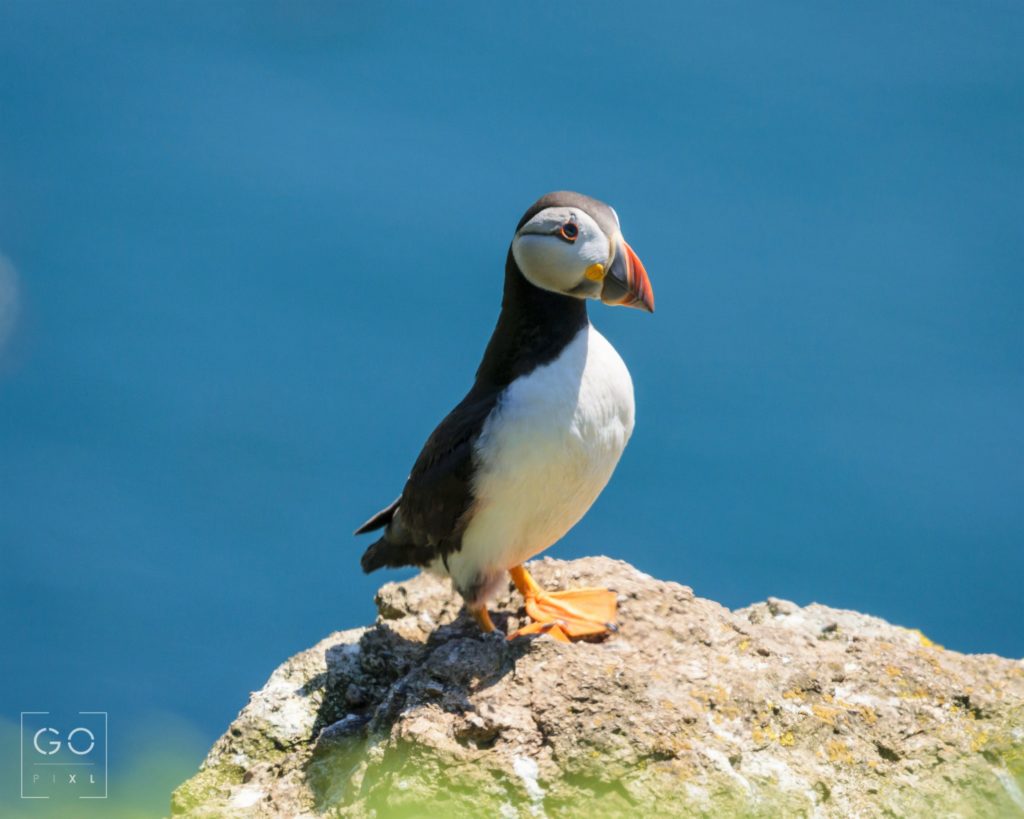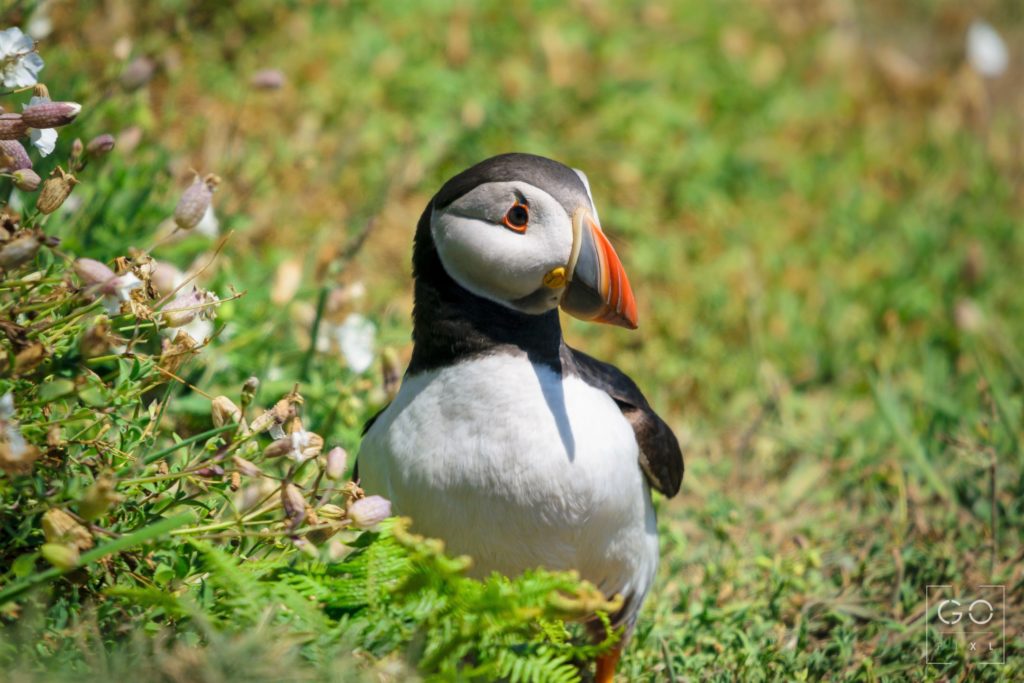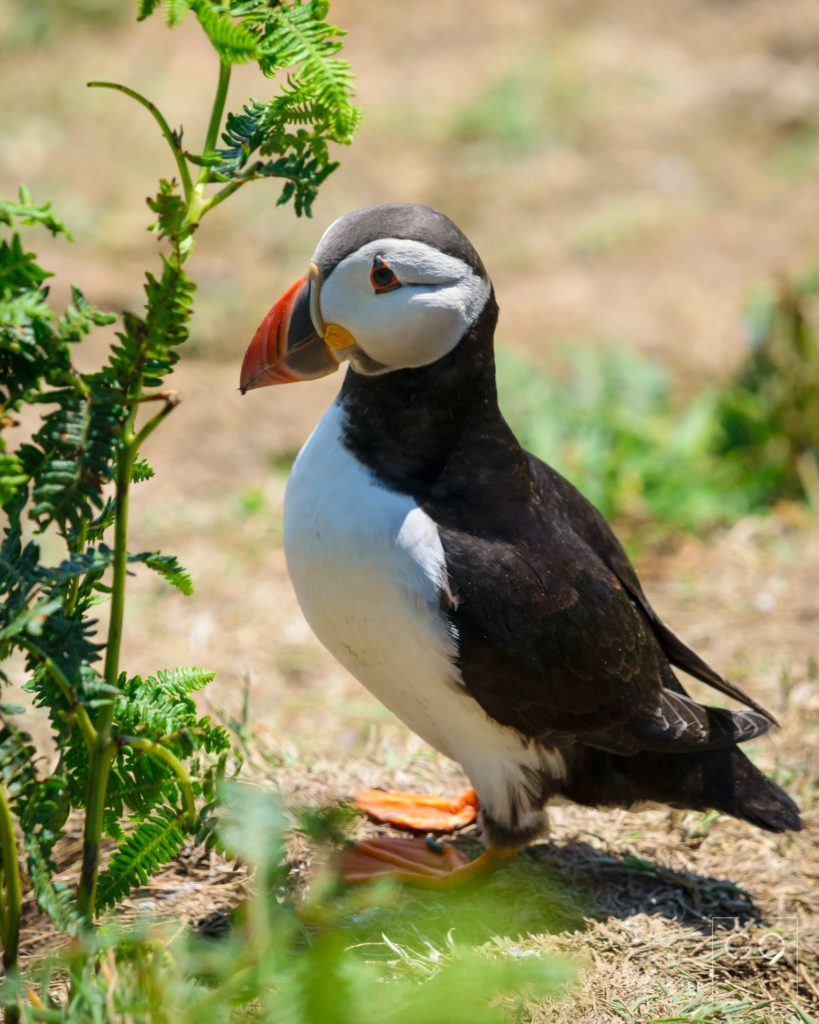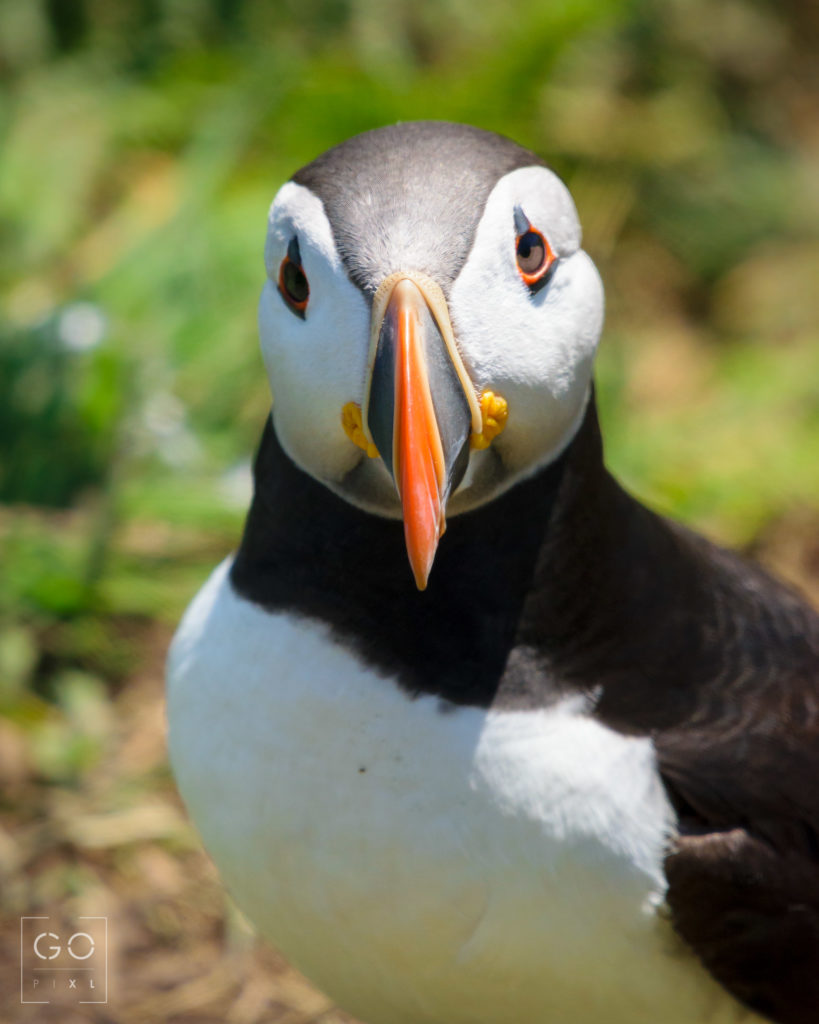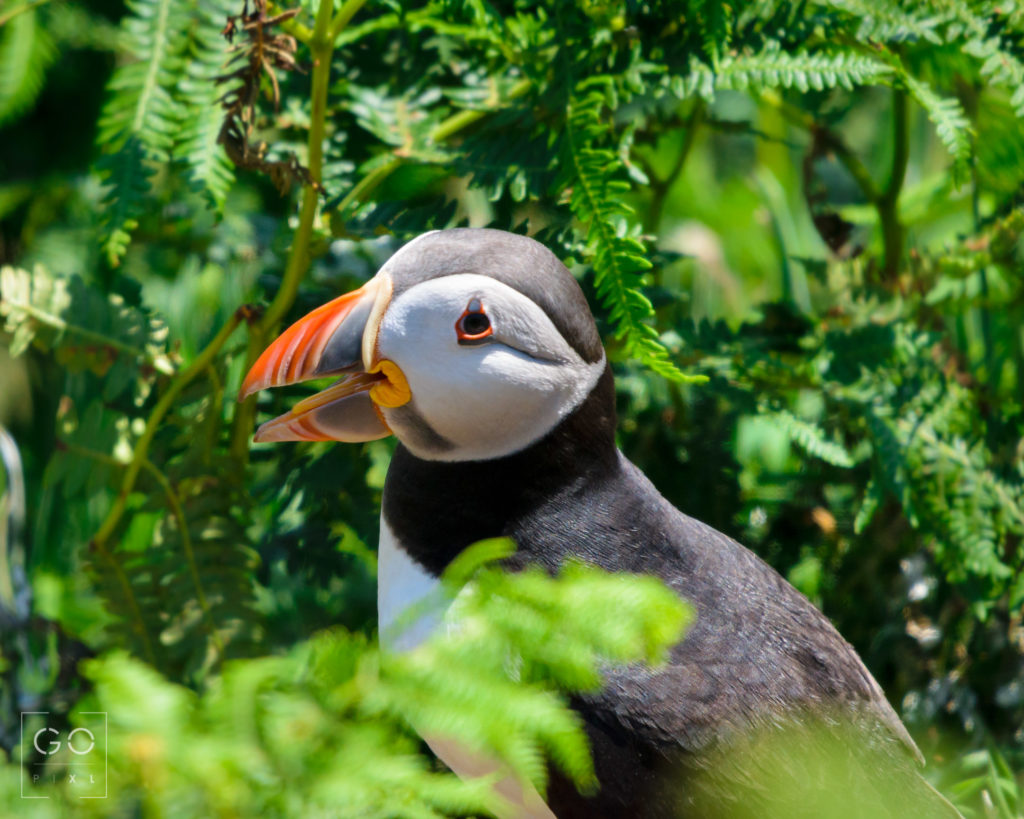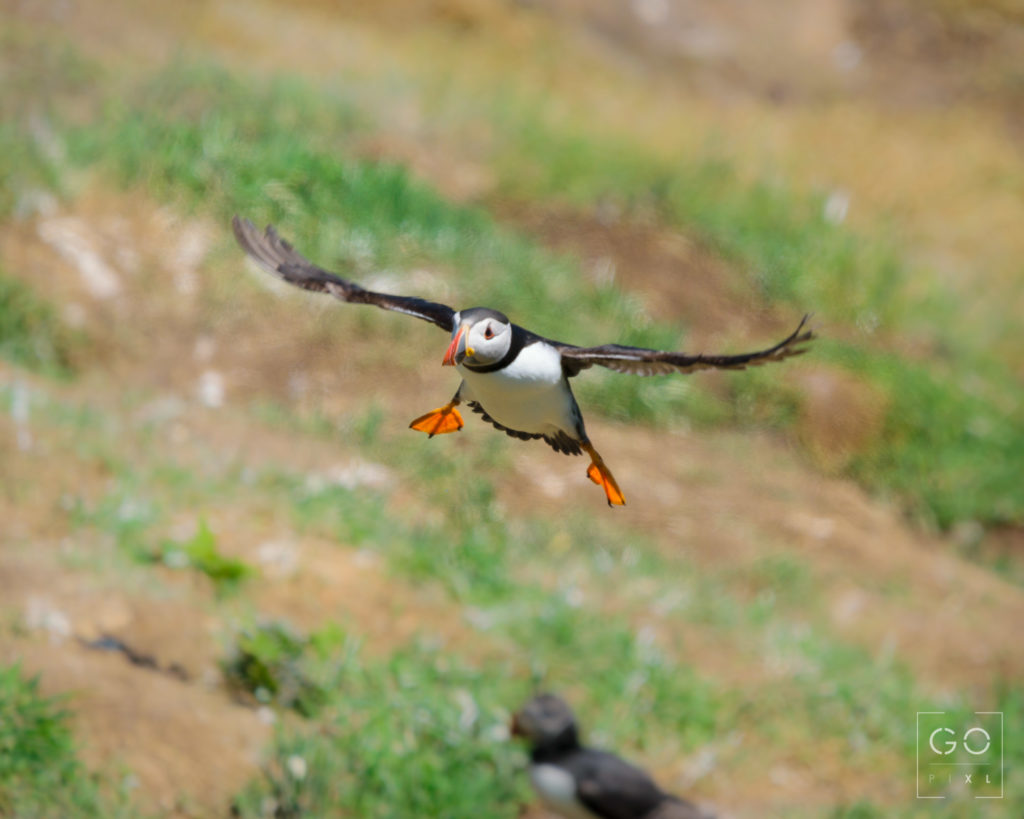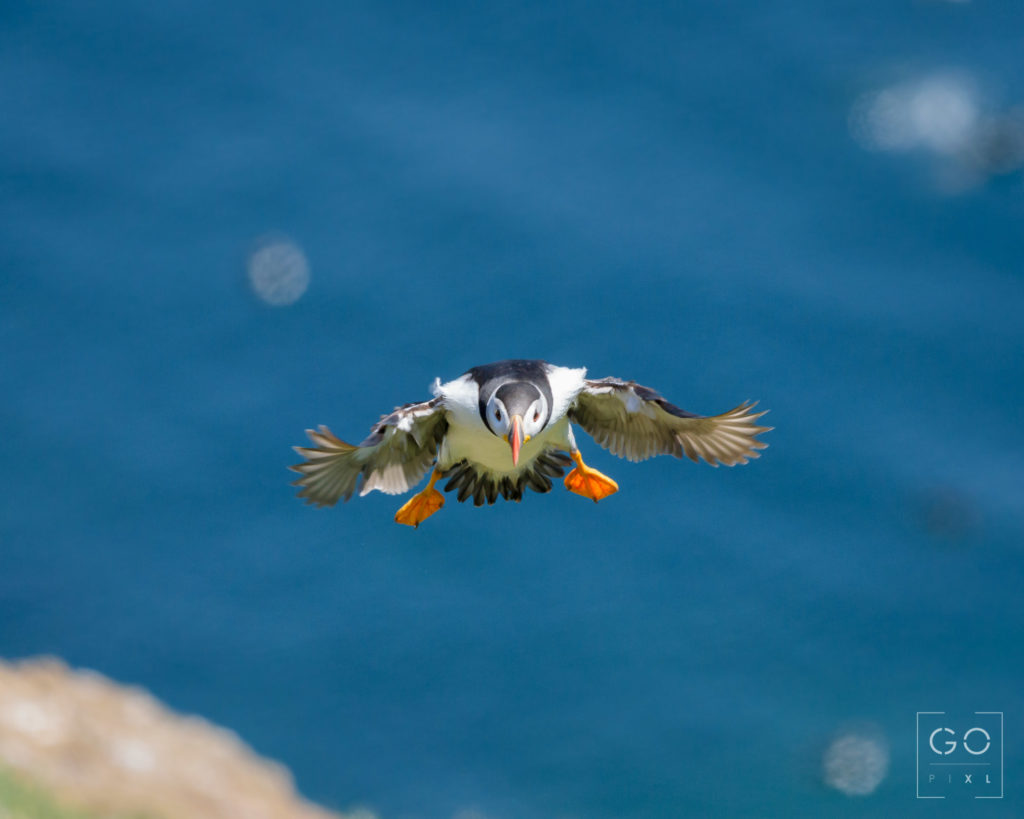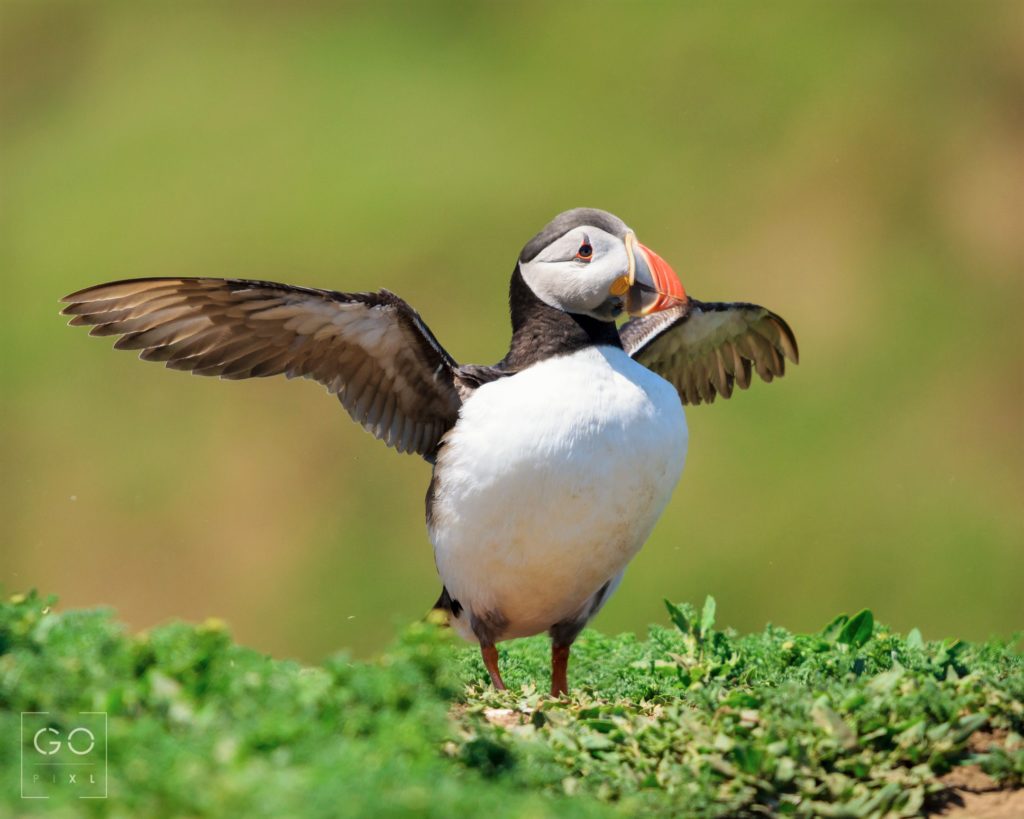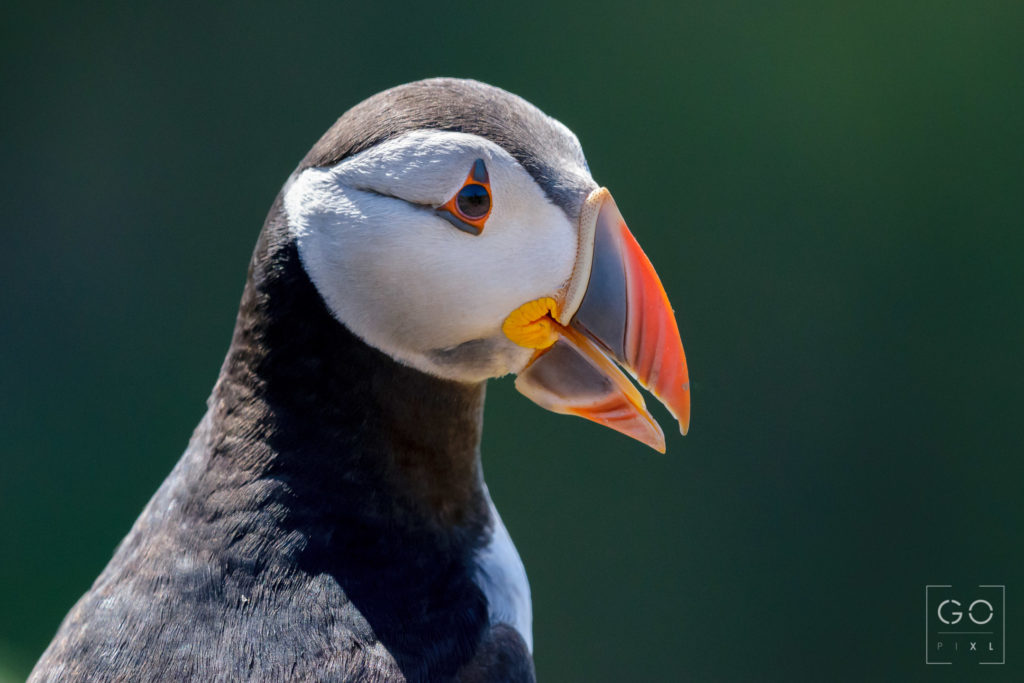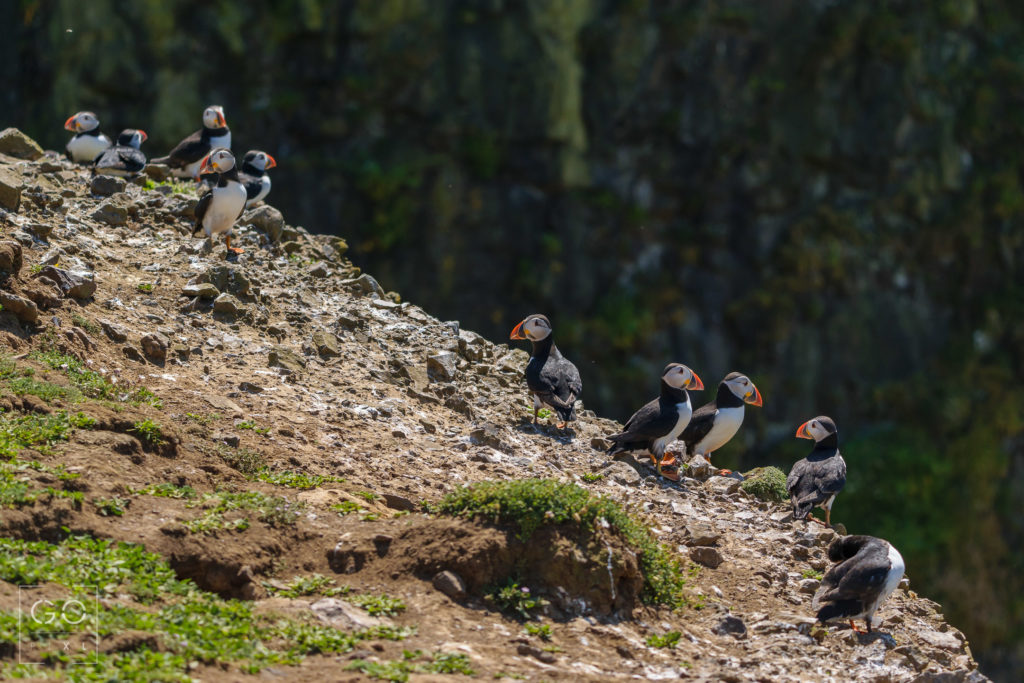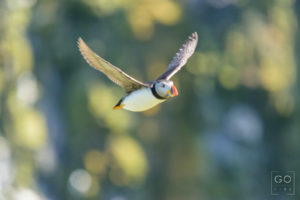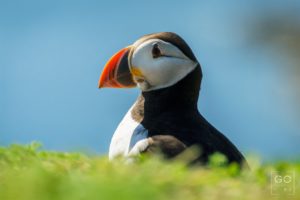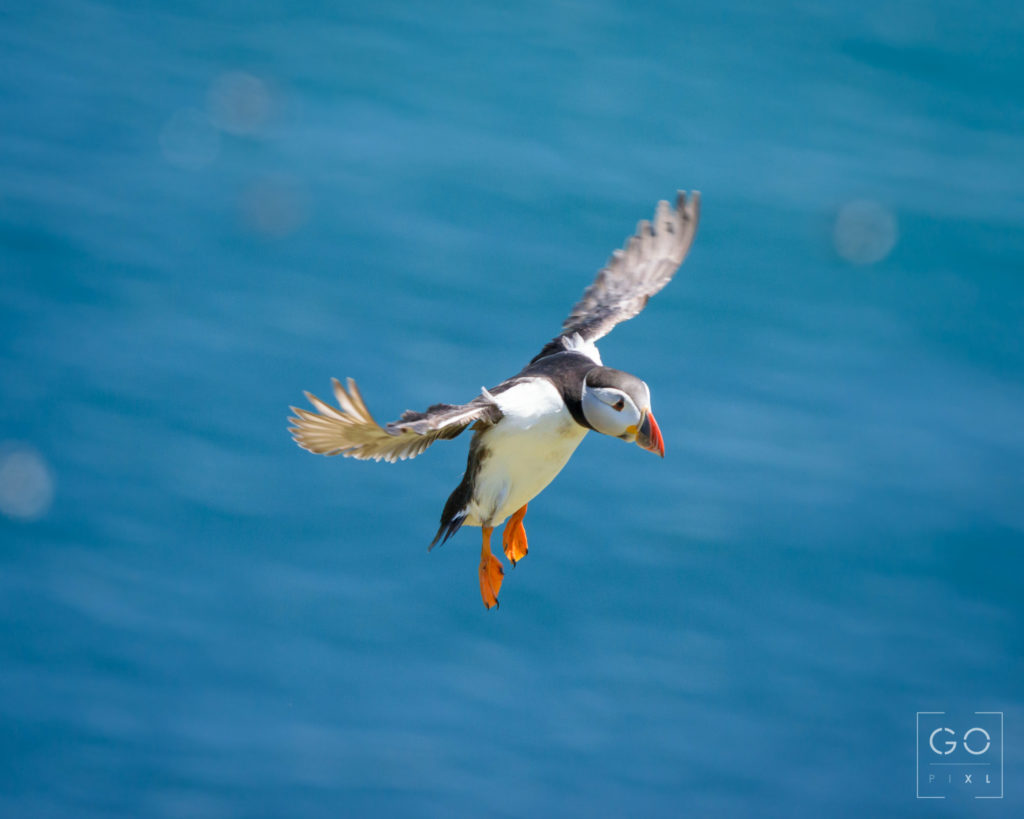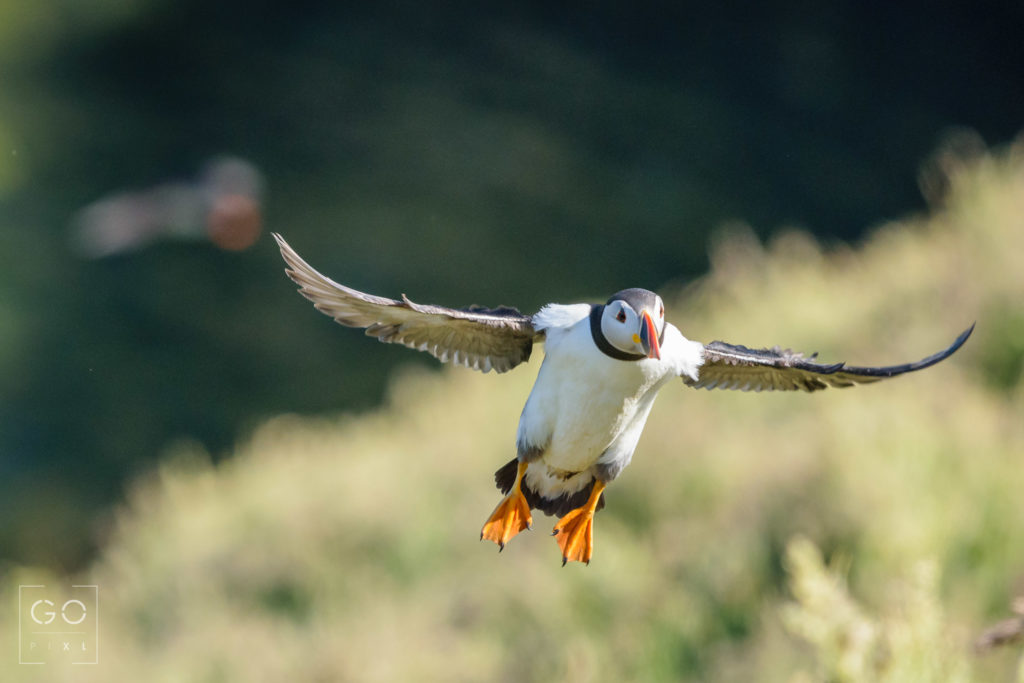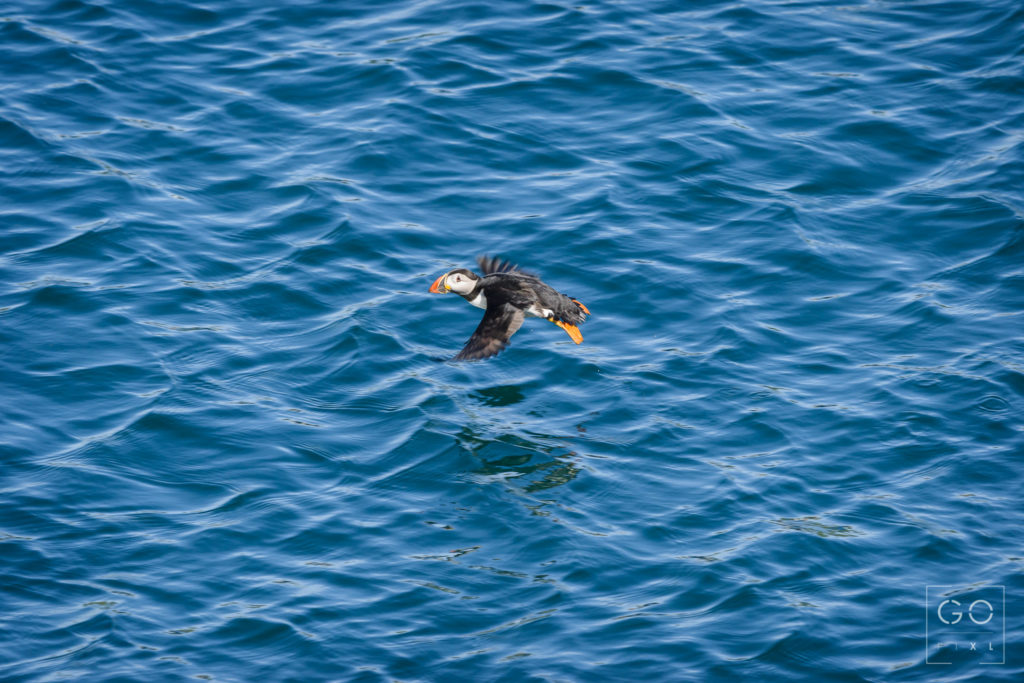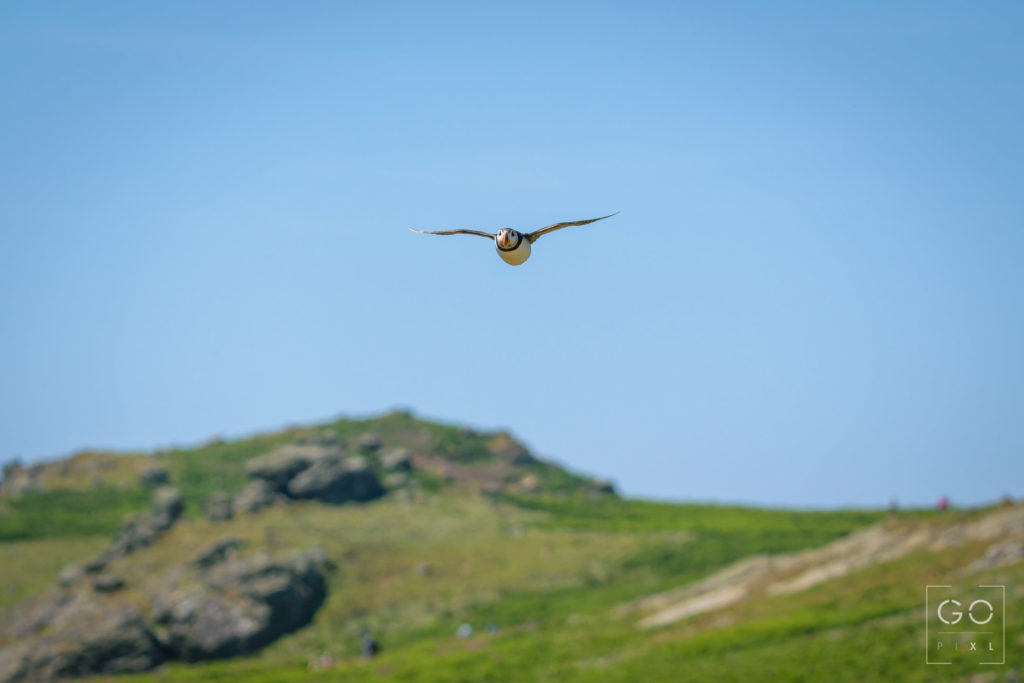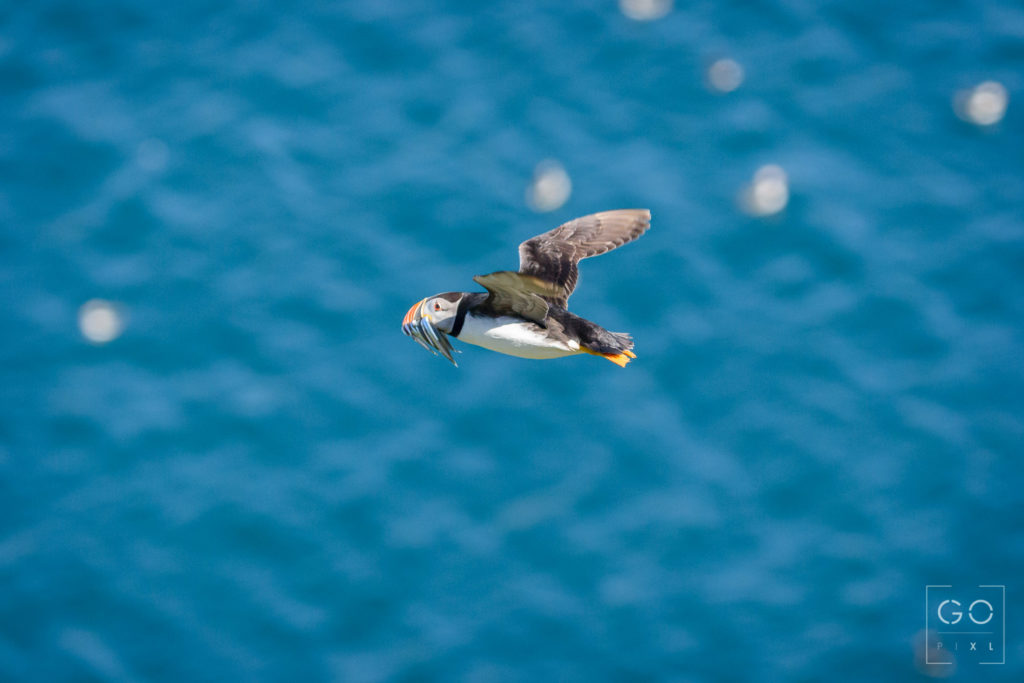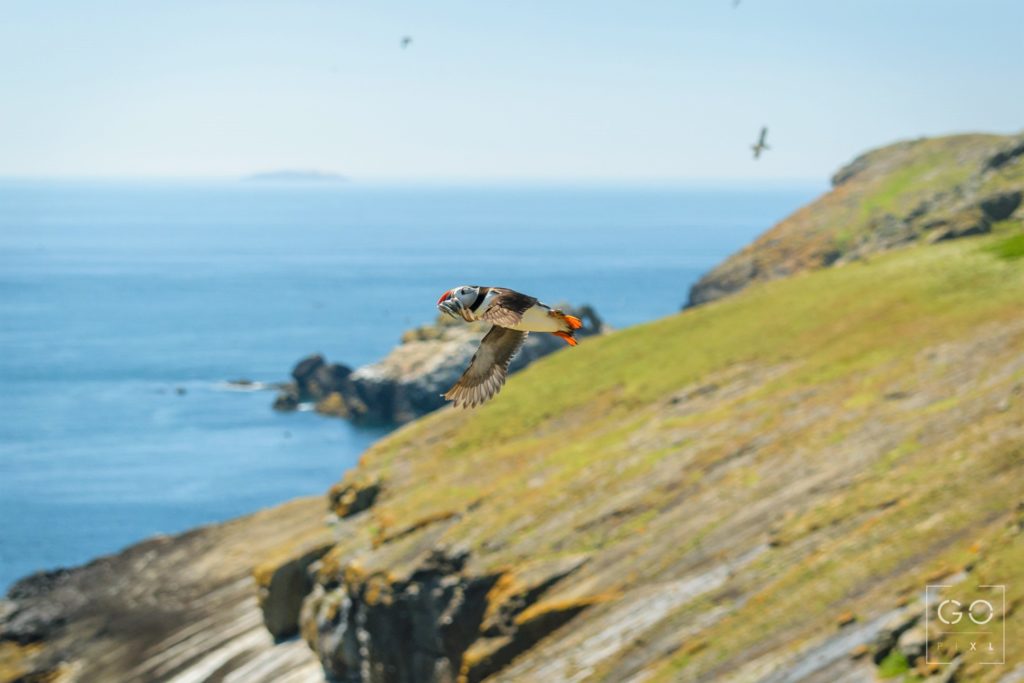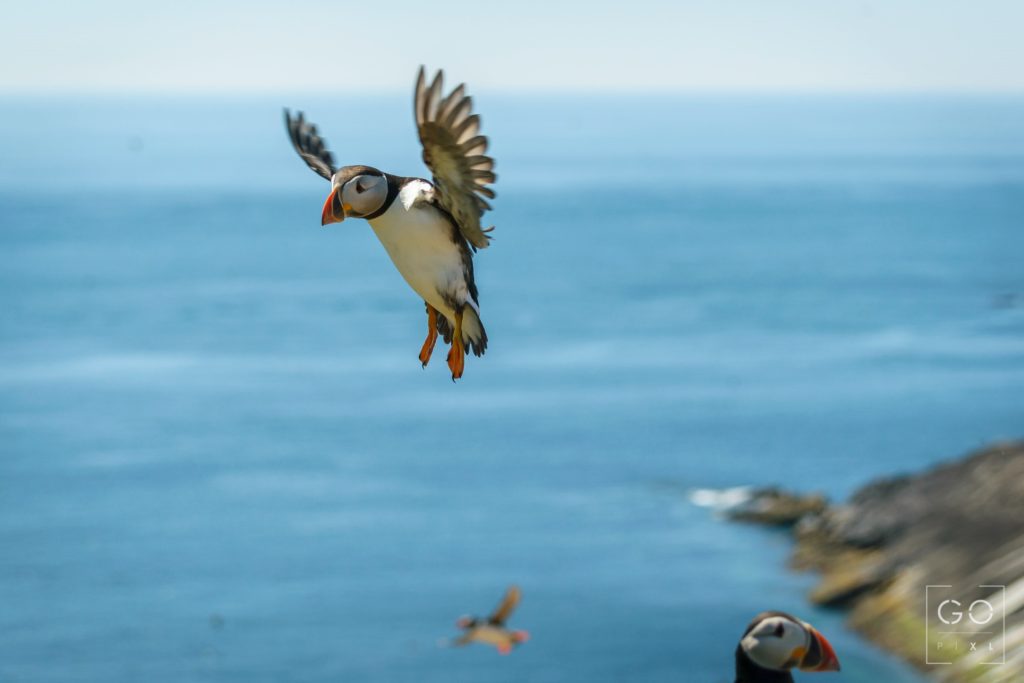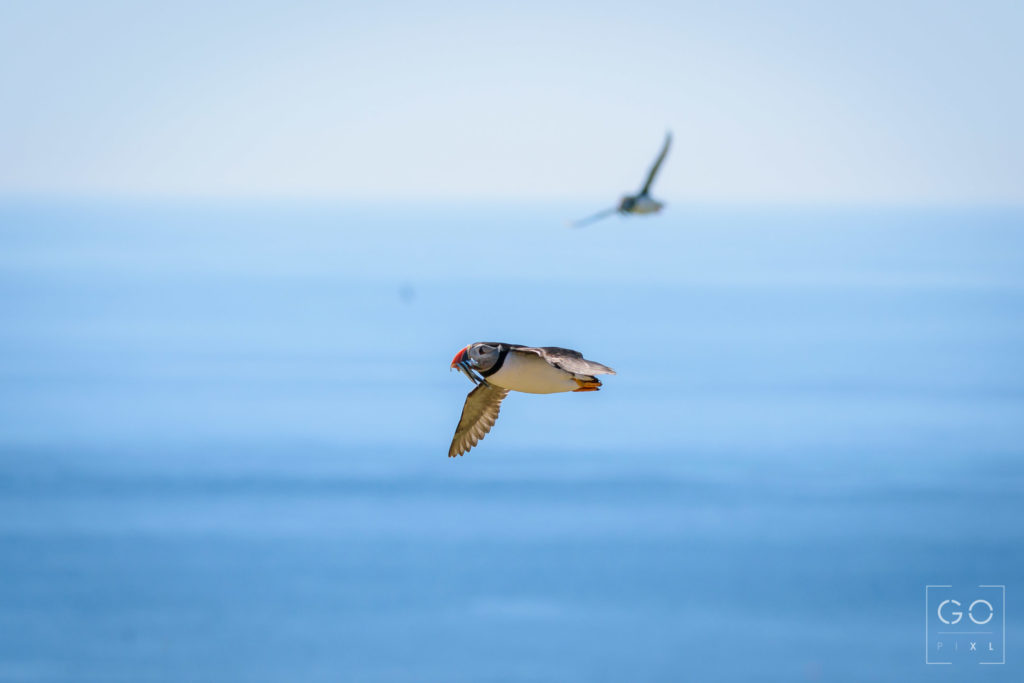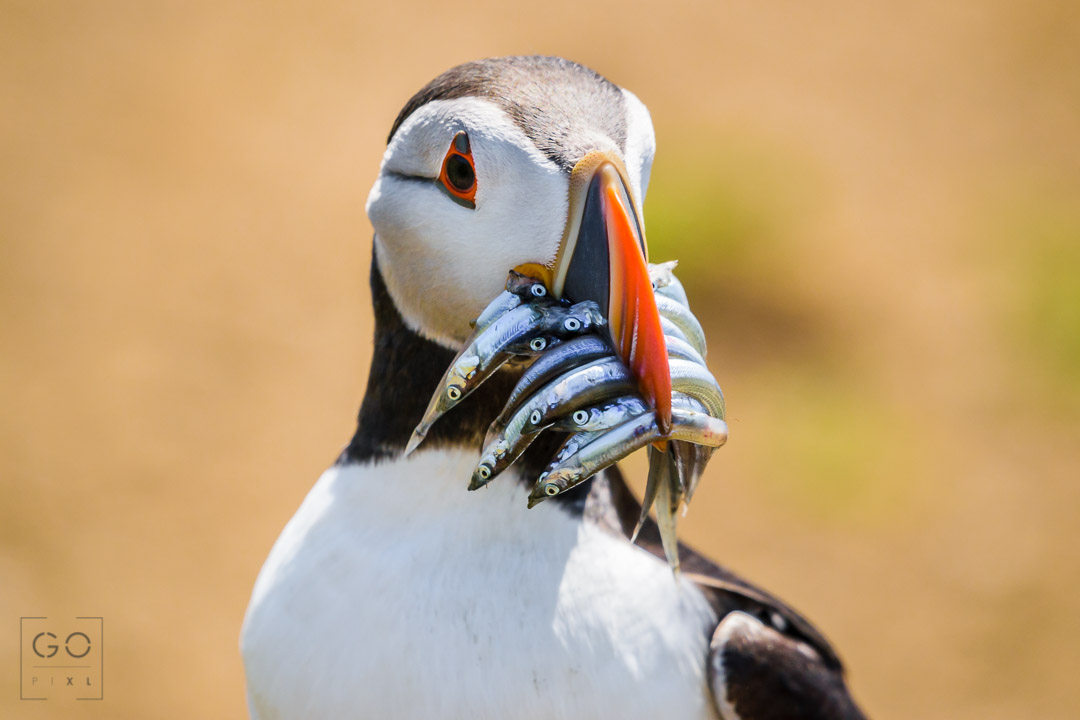
Taking pictures of Atlantic Puffins has been on my bucket list for a while. A few days ago I finally got the chance to do it 😀 .
I thought I would take this opportunity to tell you about the whole experience. If that’s on your list too, you might learn a thing or two and hopefully not make the same mistakes I did.
A bit of background information about puffins.
First of, for those of you who don’t know what Atlantic Puffins are, they are a species of migrating seabirds that is in my opinion one of the cutest birds ever! Judge for yourself:
During the breeding season (May to July), their bill becomes bright orange and they fly down in colonies to our latitudes seeking the abundance of fish to feed their chicks. The UK is lucky enough to have plenty of places and nature reserves where puffins can be found in huge numbers. The most popular places are Scotland, the Farne Islands in Northumberland and Skomer Island in Pembrokeshire.
Since I live in Bristol, Skomer Island is by far the most convenient for me. This year, the island is host to more than 31 000 puffins which makes the island VERY popular among locals, tourists and photographers.
Advice number 1: Arrive early! Really early!
As I said before, Skomer Island is a nature reserve that is only accessible by a 15min boat trip. To preserve the environment and to avoid disturbing the breeding birds too much, the Wildlife Trust of South and West Wales only allows a maximum of 250 people on the island for a maximum of 5 hours. As the tickets for the island are sold on a first come first served basis, you should arrive early if you want to secure yours.
June 2021 Update: The Wildlife Trust of South and West Wales have recently set up an online booking system, so you can now secure a trip on the island well ahead of time from your sofa without the need to turn up in person at the ticket office at the crack of dawn. What a great new! That being said, tickets go FAST! I mean, really fast! So make sure you plan your visit well in advance to avoid disappointment. To book a ticket, just visit https://www.pembrokeshire-islands.co.uk/boat-trips/land-on-skomer/ and follow the instructions.
The ticket office opens at 9AM and the first boat leaves at 10AM (there are 2 other boats leaving at 11 and 12). You can visit the island every day except Mondays, with the weekends being the most popular days. My plan was to go to the island on Sunday, the weather forecast was perfect and as I was already in Pembrokeshire on Saturday night, I could get to the ticket office early to make sure I would be one of the lucky 250 people to make it to the island.
I arrived at the car park around 7.20AM and I got immediately worried: the car park was already almost full… That didn’t bode well… I quickly paid for the car park, took my backpack and walked to the ticket office. That’s then it became real! There were already dozens of people queuing for a ticket. We all wanted to see the puffins on what was one of the best days of the year so far. I made my way down to the back of the queue, becoming increasingly worried that I might have showed up too late (even if it was 2.5 hours ahead of the first boat).
We patiently waited for the ticket office to open, the queue was slowly moving and we made our way into the ticket office. I was relieved they were still selling tickets, there were only 5 people in front of me, the tickets were in sight, when the women selling the tickets said to the group of 5 before me “I’m really sorry guys but we have just sold all the tickets for today…”. We all had the same look of extreme disappointment on our faces and I was so angry at myself not to have showed up just a bit earlier. We were SO CLOSE! And then the women said “Actually, I only have 1 ticket left”. Because the people before me were a group of 5, they turned it down and I was the next in line so I literally jumped on the ticket! I got the 250th and very last ticket to the island!! What an emotional roller-coaster!
Waiting for the boat.
With my ticket for the 12PM boat finally in hand, I had 2.5 hours to spare so I did a short hike along the beautiful coast and practised my panning and focusing technique on passing seagulls. As I bought this lens a few months ago, I am still not fully familiar with it and as I don’t do much wildlife photography I had to brush up on my technique. This is key for getting the best out of your camera/lens. You need to know it well, know what it can do, know what settings you will use, know how to handle the lens, etc.
Keeping a seagull in the viewfinder at 900mm is no easy feat and it takes some practice to get it right. After an hour of shooting seagulls, I was quite happy with the results. The birds were in focus, well exposed and correctly framed.
Now time to shoot some puffins!
Arriving on the island
This is it! The boat was docking on the island and there were puffins flying everywhere! I couldn’t help but smile as it was the first time I saw puffins with my own eyes and they look really cute and a little clumsy.
Before we were allowed to walk around the island, we all got a briefing from the Wildlife Trust warden about what types of birds are on Skomer, how many there are, what to do and what not to do to avoid disturbing the birds or damaging burrows, etc.
After that, we were free to go. Exciting!
Puffins everywhere!
Literally EVERYWHERE! Many were nesting a few feet away from the footpath, they were flying in and out of the burrows, going out to the sea to catch fish (mostly sand eels, herring, hake and capelin) and bring them back to feed their chicks. Puffins have the same partner for their whole life, so when one is out to sea to get fish, the other one stands next to the burrow to keep an eye out for predators and protect their pufflings.
On the ground, puffins are relatively easy to photograph. Even though they are only 15/20cm tall, they are not afraid of humans (as they know we are not a threat to them) so you will eventually see some of them approach you in a lovely but clumsy way. You don’t even need a telephoto! They get close enough to shoot with a wide-angle lens.
Here are a few of the ground shot I took.
The difficult bit
Photographing puffins in flight on the other hand, is a totally different ball game! I know my camera quite well and I had practised on seagulls just an hour earlier but puffins are a lot harder to shoot! They are smaller than seagulls, they fly faster and in a more erratic way. That makes it a real challenge to keep the bird in the viewfinder for long enough to focus properly and shoot. I took SOOOO many blurry pictures where the bird was out of focus… They looked like this (or worse):
There are 2 explanations for this: my technique and my gear.
I am not an expert in bird photography and panning the camera smoothly enough to follow the puffin in flight is a lot harder than it sounds, especially at extreme focal lengths like 600mm or 900mm (I shot with my D5300 paired mostly with my Sigma 150-600mm f/5-6.3 DG OS HSM). The slightest movement and you can lose sight of the subject. For the first 2 hours, 98% of my flying shots were crap, but the success rate slightly improved as I got used to their flying pattern and got better at panning the lens around to follow the birds.
That’s when another problem kicked in. You see, I work out and I am used to holding a heavy DSLR but after hand holding a big telephoto up to my face for 2 hours trying to keep it as steady as possible, it started to feel heavy. My shoulders were aching so I took a brake and used my much lighter Nikon 70-300mm for a while. It doesn’t have the reach of the Sigma but it is much easier to handhold and I got some really nice shots with it.
Reaching the limit of my gear for the first time
The most challenging situation that day was trying to shoot birds in flight coming straight towards me at high speed. When I managed to get the bird centered in the viewfinder for long enough, I was frustrated not to be able to get to shot because my camera and lens were not fast enough to keep the subject in focus as it flew towards me. My camera has a maximum burst rate of 4FPS which is too slow for this type of photography. On top of this, my lens would often lose focus even though I was in continuous single point auto-focus with 3D tracking.
This was very frustrating because it was the first time in my life that I felt like my equipement was holding me back.
As most photographers, I too am sometimes prone to what we call GAS (short for Gear Acquisition Syndrome). We are always drooling at the latest £3000 pro body or the best lens thinking it is going to make our pictures look way better. But most of the time, it is not and we are just fooling ourselves thinking the latest camera is instantly going to make us better photographers. Even the mid-range consumer cameras are good enough to take amazing pictures and whenever I feel the urge to buy a new camera, I go on Flickr and search for pictures that other photographers took with the same camera I have. This always makes me realise that other people out there are way better than I am with the same equipment so buying a new camera would actually be a waste of money. I just need to get better and learn to squeeze all the potential my camera has to offer.
This time though, it was different. There is nothing else I could have done better to get the camera to focus quickly enough on the subject. This is because that situation is one of the most demanding for any camera and you need to have a really good focusing system. Sure, you might get lucky once every 100 frames and get one that is acceptably sharp but it won’t get much better than this.
The only times I manage to get sharp images of a puffin in flight was when the bird was flying parallel to me and staying roughly at same distance (i.e. constant plane of focus). Because this is much less demanding for the camera, I was able to get a few nice shots.
One more Rookie mistake
As i said, we had perfect conditions to shoot. It was really sunny and warm. Since I was focused on taking pictures (pun intended), I didn’t even notice that I was getting roasted alive by the Welsh sun before it was too late (it’s not a legend, it does exists 😉 )… I forgot to bring sunscreen with me and there is not a single tree on Skomer Island to get in the shade. Lucky for me, I had a cheich (Tuareg scarf) that I used to cover myself as much as I could to limit the damage. So it might seem obvious but do not forget to bring sunscreen and water with you!
Conclusion
- I had an amazing day. Skomer Island and Pembrokeshire are beautiful. The coastline is gorgeous. Even if puffins aren’t your thing (Seriously! What is wrong with you! 😉 ), the South West of Wales is very nice and if you are lucky, you might see a few seals floating around, taking the sun:
- Puffins really are incredible! It was the first time I saw them with my own eyes and I can tell you I left the island with a big smile on my face. They made my day!
- Arrive at the ticket office really early (earlier than you think) and have a plan B in case you don’t make it to the island.
- Pack sunscreen, water and snacks
- Be prepared to fail. You cannot control what the animals do and you have to work with the environment. Even if you have planned everything like I did, you will not get all the shots you want, unless you have a lot of experience with bird photography and the gear necessary to keep up with them.

